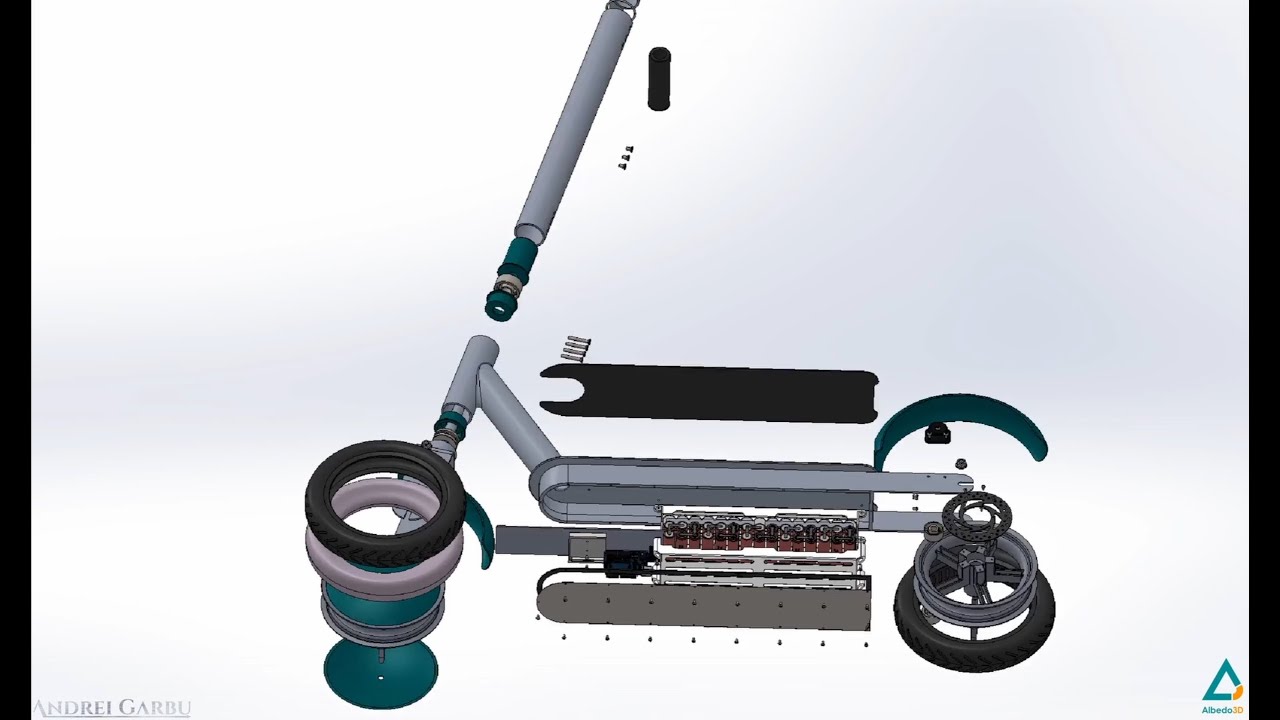- Scooter Design: Revolutionizing Urban Transportation
- Introduction
- Evolution of Scooter Design
- The Birth of Scooters
- From Designs to Dynamics
- Important Factors in Scooter Design
- Ergonomics and Riding Comfort
- Powertrain and Performance
- Lightweight and Portable
- Safety Features
- Innovations in Scooter Design
- Electric Revolution
- Smart Connectivity
- Customizability and Personalization
- Conclusion
- FAQs (Frequently Asked Questions)
- Q1: Are scooters a sustainable mode of transportation?
- Q2: Can scooters be used for long-distance travel?
- Q3: How important is maintenance in scooter performance?
- Q4: Can scooter design influence rider experience?
- Q5: Are electric scooters more expensive than traditional scooters?
Scooter Design: Revolutionizing Urban Transportation

Introduction

Scooters have become an increasingly popular mode of transportation in cities around the world. With their compact size, agility, and eco-friendly nature, scooters offer a convenient and sustainable way to navigate through urban landscapes. However, behind the smooth ride and effortless maneuverability lies a complex world of scooter design. In this article, we will delve into the realm of scooter design, exploring the intricacies and innovations that have shaped these two-wheeled wonders.
Evolution of Scooter Design
The Birth of Scooters
Scooters have a fascinating history that dates back to the early 20th century, with the introduction of the first motorized scooters. These humble beginnings laid the foundation for the sleek and sophisticated scooters we know today.
From Designs to Dynamics
Over the years, scooter design has evolved significantly to enhance not only the aesthetics but also the performance and safety aspects. Manufacturers have focused on incorporating cutting-edge technology, ergonomic features, and stylistic elements to create a harmonious blend of form and function.
Important Factors in Scooter Design

Ergonomics and Riding Comfort
One of the primary considerations in scooter design is ensuring rider comfort and ergonomics. Manufacturers analyze body posture, seating position, foot placements, and handlebar layout to provide a comfortable and fatigue-free riding experience.
Powertrain and Performance
The powertrain is the heart of any scooter. Selecting the right engine, transmission, and drivetrain to deliver optimum performance and fuel efficiency is a crucial aspect of scooter design. Manufacturers also strive to minimize vibrations and noise production for a smooth and enjoyable ride.
Lightweight and Portable
Scooters are designed to be lightweight and easily portable, allowing riders to carry them up stairs or onto public transport. Achieving this requires the use of lightweight materials and innovative folding mechanisms, allowing for compact storage without compromising strength or durability.
Safety Features
Safety is of paramount importance in scooter design. Implementing features like anti-lock braking systems (ABS), stability control, and LED lighting ensures enhanced security and instills rider confidence. The inclusion of sturdy frames and impact-absorbing materials further enhances rider protection in the event of an accident.
Innovations in Scooter Design

Electric Revolution
The emergence of electric scooters has revolutionized the industry. Electric scooters offer a cleaner and quieter alternative to traditional gasoline-powered models. Their design incorporates advanced battery technology, regenerative braking systems, and efficient electric motors, paving the way for a sustainable future.
Smart Connectivity
Scooter design has adapted to the increasingly connected world through the integration of smart features. G PS navigation systems, mobile app compatibility, and digital instrumentation panels provide riders with real-time information and connectivity, enhancing convenience and ride quality.
Customizability and Personalization
To cater to individual preferences and styles, scooter manufacturers now offer various customization options. From color choices and accessories to adjustable handlebars and seats, riders can create a scooter that truly reflects their personality.
Conclusion
The world of scooter design encompasses a myriad of components and intricacies, seamlessly blending technology, performance, and aesthetics. From the early motorized scooters to the electric revolution and smart connectivity, scooters have come a long way. As urban landscapes continue to evolve, scooter design will undoubtedly adapt and innovate, catering to the needs and desires of riders around the globe.
FAQs (Frequently Asked Questions)

Q1: Are scooters a sustainable mode of transportation?
Yes, scooters are considered a sustainable mode of transportation due to their efficient use of energy, minimal carbon emissions, and ability to alleviate traffic congestion.
Q2: Can scooters be used for long-distance travel?
While scooters are primarily designed for short to medium-distance commutes, there are models available that provide longer range capabilities. However, it is essential to consider charging infrastructure and comfort requirements for extended journeys.
Q3: How important is maintenance in scooter performance?
Regular maintenance is crucial for optimal performance and longevity of a scooter. It includes tasks like tire pressure checks, oil changes, and general inspections to ensure safety and functionality.
Q4: Can scooter design influence rider experience?
Absolutely! Scooter design plays a significant role in the riders experience. Factors such as comfort, handling, and accessibility directly impact the overall satisfaction of the rider.
Q5: Are electric scooters more expensive than traditional scooters?
Electric scooters tend to have a higher initial cost compared to traditional gasoline-powered scooters. However, they offer long-term savings through reduced fuel and maintenance expenses, making them cost-effective options in the long run.

